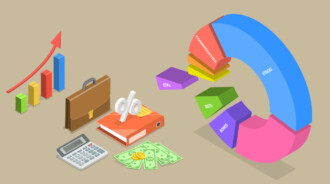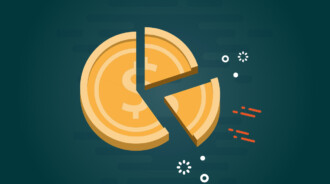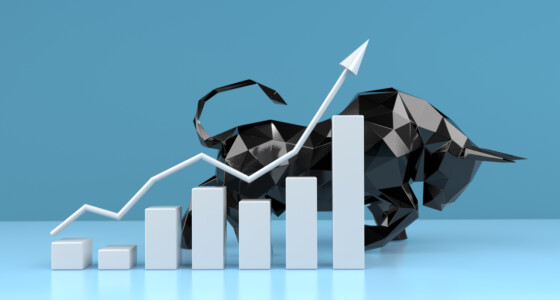

One of the important stages of learning to invest and trade is the study of assets. In this article, we will tell you about the two main types of assets in accounting and economic terms: tangible and intangible.
Briefly about tangible and intangible assets
The categorization of assets into tangible or intangible is based on the physical and real value and the existence of an asset. Most commonly, when we think of assets, we think of things we can physically touch, feel, or see. The categorization we are discussing today refers to this aspect.
Tangible assets are assets owned that can be monetarily valued and physically touched, seen, felt, or operated. Tangible products or goods, such as equipment or furniture, are often tangible resources/assets that a corporation owns. The primary asset class used by businesses to create their goods and services is tangible assets.
Intangible assets are assets owned that can be monetarily valued but cannot be physically touched, seen, felt, or operated. These assets do not exist physically but need to be valued as they affect a corporation’s revenue stream. Copyright on video footage or song is an example of an intangible asset. Every time the video or music is used, the body that holds the copyright is compensated.
To better understand the difference, let’s consider the example: a service is intangible or impalpable while a specific product is tangible.
Whilst they are different from one another, both tangible and intangible assets bring value to their owners. Both of these asset classes are originally included on the balance sheet, which aids banks, creditors, and investors in determining the company’s worth.
Tangible assets
What is the meaning of tangible assets? We can define tangible as anything you can touch or feel. This category includes goods that have monetary value along with physical existence. Tangible assets often form the core of the company’s work, transactions, and existence and are used in activities. Since they are expressed physically, they can be harmed by natural occurrences.
Land, vehicles, equipment, machinery, furniture, inventory, and securities are the most common examples of tangible assets. Almost every company from every industry utilizes a few of them to operate. In today’s age, a business needs at least an office and a few computers to start running.
The meaning of tangible assets can be further understood by categorizing them into current and non-current assets. This categorization is on the basis of the ability to turn an asset into cash (or, in other words, sell it).
Current assets
Any asset that can be sold is classified as a current asset. Current assets are physical goods, products, or commodities that can be comfortably converted into cash, which in turn is the most liquid form of assets used for daily transactions.
Perhaps a more apt definition will also include the time for which current assets are usually owned. They are typically held temporarily with the purpose of being either used or sold within a year.
Non-current assets
Non-current, or fixed assets, are those that a corporation utilizes for longer than a year of operations. These assets are realistically difficult to be sold or convert into cash in case of emergencies. Dominantly, fixed assets are several times more monetarily valued than current ones.
Non-current assets are declared as Property, Plant, and Equipment (PP&E) on the balance sheet and consist of items like vehicles, equipment, furnishings for offices, buildings, etc. Revenue is the amount a firm report on its income statement as a result of the use of physical assets.
Intangible assets
Intangible assets are the invisible assets of an owner or business. They are fictitious assets that hold value themselves and help generate value for the owner or the firm. They can end up contributing more to the benefit than their counterpart under several circumstances.
So, what exactly do intangible products help a company with? Comprehending the meaning of fictitious assets is essential in modern-day business dealings. In most cases, intangible assets are intellectual property or abstract data or ideas that are secured from uncredited usage or theft. Let’s make thing clearer by looking at a few fictitious asset examples:
- Patents – these grant an inventor property or usage rights.
- Software & algorithms – these take years of education and skill to develop and can be valued as an asset by a software house.
- Trademarks – these are recognizable words or symbols that identify a certain product and set one firm apart from another.
- Franchises are licenses that an individual (the franchisee) purchases to have access to a company’s brand and market products under that name.
- Goodwill is the price another firm pays above the market value of a company in an acquisition.
- Copyrights are a form of intellectual property protection that prevents unauthorized parties from copying it.
Other intellectual commodities, like service contracts, blueprints, manuscripts, joint ventures, etc., could hold and build monetary value depending on the business. Compared to tangible assets, intangible products are complicated to monetarily value. Accountants and business professionals find it difficult to estimate the benefit an intangible asset may bring. However, what is certain is that the future potential of a corporation is raised with the help of intangible assets.
Companies in the 21st century should learn to utilize intangible assets for the benefit of their business. IT firms have nothing but their programs, software, and thousands of lines of code. Treating such data or research as an intangible asset is what safeguards their company financially. Some major industries that heavily use intangible assets also include automobiles, healthcare, consumer goods, entertainment, and technology.
Almost every firm is built on an idea, a product, or an innovation. To stay in the game, it is necessary to protect that innovation from being unethically used by others. This is where intangible assets like patents play an important role, that not only protects ideas but clarifies the financial side of the company.

Special considerations
So far, we have covered simple definitions, explanations, and examples of tangible and intangible assets. Let us further understand how these classes of assets are treated by accountants.
Adjusting the value of assets over time
Since tangible goods often have a defined value and lifespan, they are also the simplest to evaluate. Upon acquisition, tangible assets are recorded on the balance sheet. As they are used up over time, they are transferred to the income statement, in most cases as an expenditure.
For instance, cash is a tangible asset that, once utilized, is accounted for in a company’s expenditure. The cost of operating the company is treated by transferring cash, a current asset, to the expenditure section in the income statement. Similarly, the costs directly associated with producing an item are reflected in the cost of goods sold section of the income statement.
Depreciation
Depreciation essentially distributes a part of an asset’s cost over time when it is utilized to derive monetary benefit. Depreciation is perfect for helping understand how tangible assets deteriorate over the course of their useful lives.
Similar to current assets, fixed tangible assets are also adjusted with time as they are utilized The values of tangible fixed assets, including plants, machines, or furniture, are reduced by charging depreciation against them. When their useful lives are shortened, a portion of these assets is depreciated and expensed on the income statement.
Amortization
While depreciation is used for tangible assets, the concept of amortization is used for intangible ones. It allocates the value of the assets each year as they are transferred to the income statement expenses.
Tangible assets vs. intangible assets (example)
We shall use the balance sheet below to learn how to distinguish between tangible and intangible assets.
The headings Current Assets, Long-term investments, and Property, plant, & equipment all contain tangible assets. As you can see, all these are physical products or properties that hold and derive value for the company. Cash, trading securities, accounts receivables, inventories, investments, land, and buildings are all tangible assets in our case here.
The only intangible asset we have in the balance sheet below is a patent worth six figures USD. A patent protects an intellectual idea or formula from illegal usage or theft. The value it carries is what it is worth to the business and the competitors who would want to get it.
Is goodwill an intangible asset?
The term “goodwill” refers to the worth of a company’s reputation, clientele, stakeholder ties, and employee relations. Goodwill is one of the most common intangible assets you will find on financial statements. It is involved in the event that one firm buys another. The percentage of the acquisition price known as goodwill exceeds the fair market worth of the acquired company’s assets and liabilities.
What are the main types of intangible assets?
Goodwill, brand equity, intellectual property, including patents, research and development (R&D), and licensing are the key categories of intangible assets.
Are fixed assets considered intangible or tangible assets?
Due to their actual physical presence, fixed assets are always regarded as tangible assets. Fixed assets include things like real estate, plants, factories, machines, etc. These long-term assets lose their value over time before being sold for cash.
Conclusion
Understanding the difference between tangible and intangible assets, physical and fictitious ones, is crucial today. Technology is progressing at the speed of light following the advancement in AI, algorithms, etc. In such a trend, intangible assets are emerging from the shadow of tangible ones. The importance of intellectual property is growing, which is increasingly becoming the center of corporate activity.








